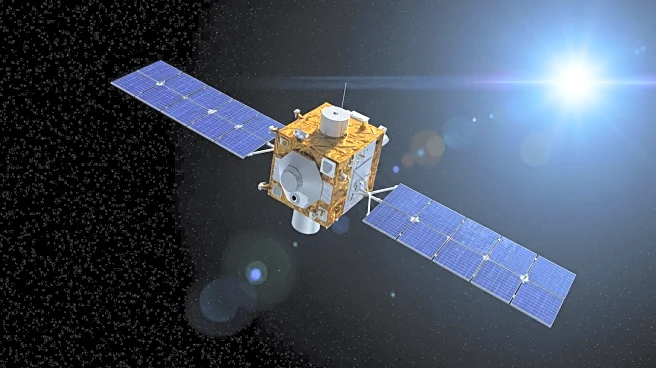What's Happening?
NASA is exploring the possibility of raising the orbit of its Neil Gehrels Swift Observatory, a spacecraft that has been instrumental in studying high-energy cosmic phenomena since its launch in 2004. The agency is working with two American companies, Cambrian Works and Katalyst Space Technologies, to develop concept design studies for this potential orbit boost. The Swift Observatory's orbit has been gradually decaying due to increased atmospheric drag, exacerbated by heightened solar activity. This situation presents an opportunity for NASA to advance U.S. space industry capabilities while potentially extending the observatory's scientific mission. The initiative is part of NASA's Small Business Innovation Research (SBIR) Program, which aims to leverage commercial technologies for innovative and cost-effective solutions.
Why It's Important?
The potential orbit boost for the Swift Observatory is significant for several reasons. Firstly, it could extend the operational life of a key scientific instrument that has contributed to our understanding of gamma-ray bursts and other cosmic events. This would allow continued data collection and analysis, benefiting the scientific community. Additionally, the collaboration with U.S. companies highlights NASA's commitment to fostering innovation within the American space industry. By engaging small businesses in the development of space technologies, NASA is supporting economic growth and maintaining U.S. leadership in space exploration. The project also serves as a testbed for future spacecraft servicing missions, which could have broader applications in maintaining and extending the life of other satellites.
What's Next?
NASA will continue to evaluate the feasibility and cost-effectiveness of the proposed orbit boost for the Swift Observatory. The concept studies by Cambrian Works and Katalyst Space Technologies will inform NASA's decision-making process. If deemed viable, the orbit boost could be implemented, extending the observatory's mission. Alternatively, NASA may allow the spacecraft to reenter Earth's atmosphere if the boost is not pursued. The agency is also collaborating with Starfish Space to explore additional options for the orbit boost, leveraging existing technologies under development. The outcome of these studies will shape future strategies for spacecraft servicing and orbit management.











